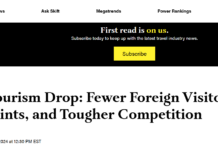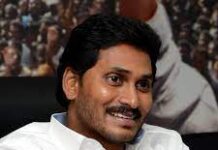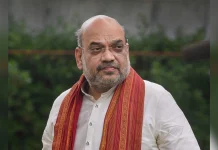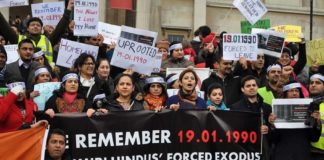On 24 June 2021, 14 mainstream political leaders from Jammu and Kashmir met Prime Minister Narendra Modi in New Delhi. The meeting was called by the prime minister and it was the first of its kind ever since the Jammu and Kashmir Reorganisation Bill was passed on 5 August 2019. Among various factors that might have led to the meeting, the following have been discussed widely in the media: the back-channel talks with Pakistan; external pressure; the China factor, post-Galwan; the need for initiating a political process; and the worsening situation in Afghanistan. The fact that the separatist Hurriyat leaders were kept out of the purview of any such engagement signalled that the days of appeasement of such constituency were over.
By Nazir Ahmad Mir
The meeting was the first political outreach from New Delhi to the mainstream political leaders who had been waiting for such interaction for almost two years. Given the political vacuum that existed in the Union Territory (UT) of Jammu and Kashmir since the fall of the coalition government in June 2018, which has had a debilitating impact on local politics and led to a lot of speculation, it was the need of the hour to engage the local leadership in a bid to acquaint them with the thought process in New Delhi and to resume political activities in the UT. As one government official had said, prior to the meeting, it was an attempt to “open a line of communication with the mainstream leaders” of the UT. The situation was fast reaching the point of a mutually hurting stalemate. The Centre needed to act on its promise to normalise the local political process as much as the political leadership from the state wanted restoration of the democratic process to ensure representative governance in the UT.
The meeting was not meant to initiate a one-way communication from the Centre. It was held in a cordial environment, with members of the delegation raising their issues and expressing their concerns to the prime minister, while the latter apprised them of the developmental steps being taken by the government in the UT. Immediately after the conclusion of the meeting, the delegation, including four former chief ministers of the erstwhile state of Jammu and Kashmir, said that the meeting was a positive step towards reviving political activities and emphasised that certain concrete measures and follow-ups were necessary before the political process can be restarted.
Prime Minister Modi acknowledged that some measures need to be taken to remove “Delhi ki Doori” (distance from Delhi) as well as “Dil ki Doori” (distance between hearts). The message sought to strike an emotional chord with members of the delegation, who had complained about their being put under arrest at the time of tabling of the Jammu and Kashmir Reorganisation Bill in August 2019. He assured them further that he is committed to reviving the democratic process in the UT.
Home Minister Amit Shah too told the delegation that after the completion of the ongoing delimitation exercise, assembly elections would follow and “at an appropriate time” the statehood would be restored.
The members of the delegation were of the view that it was necessary to regain the trust of the people and the first step in that direction should be the restoration of the statehood , after the delimitation exercise. The assembly elections should follow the grant of statehood to the UT. While speaking on behalf of 14 leaders belonging to eight parties, former chief minister of Jammu and Kashmir Ghulam Nabi Azad put forward five demands: restoration of statehood, protection of land and job rights for the locals, rehabilitation of the Kashmiri Pundits, release of political prisoners, and holding of the assembly elections.
The main challenge for the local political leadership is to regain the trust of their respective political constituencies. It is for this purpose that the People’s Alliance for Gupkar Declaration (PAGD) came into existence on 4 August 2019, which in its second declaration sought “to assure the people that all [their] political activities [would] be subservient to the sacred goal of reverting to the status of J&K as it existed on 4th August 2019.” After almost a year and 10 months, the PAGD leadership appears to be pragmatic enough to settle for statehood for the UT of Jammu and Kashmir; whether it goes down well with the people remains to be seen.
There is no denying the fact that the political vacuum in the UT has created a “legitimacy crisis” for the mainstream political leaders, who would now like to make their respective constituencies believe that they could still fight and secure some concessions from New Delhi. They might, thus, be looking for some face-saving political guarantees to this effect. That is perhaps the reason why Omar Abdullah has said that he would not fight elections unless the statehood is restored and Mehbooba Mufti has even emphasised the restoration of “special status”. It appears that restoration of the statehood and the assurance of protection of land rights and jobs for the locals would be a good start to give a sense of relief and political entitlement to the local people. This could be based on the model that already exists in some other states in the country, as per the Constitution of India.
On the economic front too, the government needs to keep investing in creating more jobs to enable the local aspiring youth to earn a dignified livelihood. This can help wean them away from militancy. The new economic policy of the UT is already making such commitments. By December 2020, the investment proposals received by the UT were worth ₹3,325 crores, mainly in the healthcare and medical education sectors9 , which have tremendous employment potential. Lieutenant Governor (LG) Manoj Sinha has recently announced a new Industrial Development Scheme (IDS) after long deliberations in January 2021 with a total outlay cost of ₹28,400 crores1 , aimed at taking development to the block level and creating employment opportunities for 4.5 lakh people. The LG also said in New Delhi on 2 January 2021 that the UT government was looking for an investment worth $4 billion in the next two to three years. For setting up new industries, the government is identifying 6,000 acres of land across the UT. While taking up such a development policy, the government would also need to ensure the environmental sustainability of such projects, given the sensitive ecology of the UT.
To sum up, the meeting on 24 June was the first step towards reviving the political process in Jammu and Kashmir. It will now require follow-up action from the government to regain the trust of the mainstream political leaders, who are struggling to address the issue of alienation among some sections of the local population, especially in Kashmir. This would require efforts at both political and economic fronts. Given the fact that the erstwhile state had a “special status”, upgrading the status of Jammu and Kashmir from that of a UT to a full state, much like other states of the Indian Union, might address the issue of alienation to some extent. At the same time, some provisions for job and land rights for the locals, as demanded by many across the UT, as well as taking positive measures to address the core issues of misgovernance and corruption and ensuring fair and rightful distribution of resources, will certainly help in the revival of the political process in Jammu and Kashmir. An elected local government will be most suitable to handle such matters effectively.
This article first appeared in www.idsa.in and it belongs to them.








